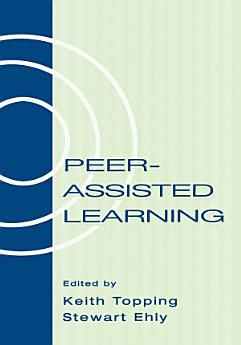Peer-assisted Learning
ก.ค. 1998 · Routledge
eBook
392
หน้า
family_home
มีสิทธิ์
info
reportคะแนนและรีวิวไม่ได้รับการตรวจสอบยืนยัน ดูข้อมูลเพิ่มเติม
เกี่ยวกับ eBook เล่มนี้
Peer Assisted Learning (PAL) involves children in school consciously assisting others to learn, and in so doing learning more effectively themselves. It encompasses peer tutoring, peer modeling, peer education, peer counseling, peer monitoring, and peer assessment, which are differentiated from other more general "co-operative learning" methods. PAL is not diluted or surrogate "teaching"; it complements and supplements (but never replaces) professional teaching--capitalizing on the unique qualities and richness of peer interaction and helping students become empowered democratically to take more responsibility for their own learning.
In this book, PAL is presented as a set of dynamic, robust, effective, and flexible approaches to teaching and learning, which can be used in a range of different settings. The chapters provide descriptions of good practice blended with research findings on effectiveness. They describe procedures that can be applied to all areas of the school curriculum, and can be used with learners of all levels of ability, including gifted students, students with disabilities, and second-language learners. Among the distinguished contributors, many are from North America, while others are from Europe and Australia. The applicability of the methods they present is worldwide.
Peer-Assisted Learning is designed to be accessible and useful to teachers and to those who employ, train, support, consult with, and evaluate them. Many chapters will be helpful to teachers aiming to replicate in their own school environments the cost-effective procedures described. A practical resources guide is included. This volume will also be of interest to faculty and researchers in the fields of education and psychology, to community educators who want to learn about the implications of Peer Assisted Learning beyond school contexts, and to employers and others involved in post-school training.
In this book, PAL is presented as a set of dynamic, robust, effective, and flexible approaches to teaching and learning, which can be used in a range of different settings. The chapters provide descriptions of good practice blended with research findings on effectiveness. They describe procedures that can be applied to all areas of the school curriculum, and can be used with learners of all levels of ability, including gifted students, students with disabilities, and second-language learners. Among the distinguished contributors, many are from North America, while others are from Europe and Australia. The applicability of the methods they present is worldwide.
Peer-Assisted Learning is designed to be accessible and useful to teachers and to those who employ, train, support, consult with, and evaluate them. Many chapters will be helpful to teachers aiming to replicate in their own school environments the cost-effective procedures described. A practical resources guide is included. This volume will also be of interest to faculty and researchers in the fields of education and psychology, to community educators who want to learn about the implications of Peer Assisted Learning beyond school contexts, and to employers and others involved in post-school training.
ให้คะแนน eBook นี้
แสดงความเห็นของคุณให้เรารับรู้
ข้อมูลในการอ่าน
สมาร์ทโฟนและแท็บเล็ต
ติดตั้งแอป Google Play Books สำหรับ Android และ iPad/iPhone แอปจะซิงค์โดยอัตโนมัติกับบัญชีของคุณ และช่วยให้คุณอ่านแบบออนไลน์หรือออฟไลน์ได้ทุกที่
แล็ปท็อปและคอมพิวเตอร์
คุณฟังหนังสือเสียงที่ซื้อจาก Google Play โดยใช้เว็บเบราว์เซอร์ในคอมพิวเตอร์ได้
eReader และอุปกรณ์อื่นๆ
หากต้องการอ่านบนอุปกรณ์ e-ink เช่น Kobo eReader คุณจะต้องดาวน์โหลดและโอนไฟล์ไปยังอุปกรณ์ของคุณ โปรดทำตามวิธีการอย่างละเอียดในศูนย์ช่วยเหลือเพื่อโอนไฟล์ไปยัง eReader ที่รองรับ








